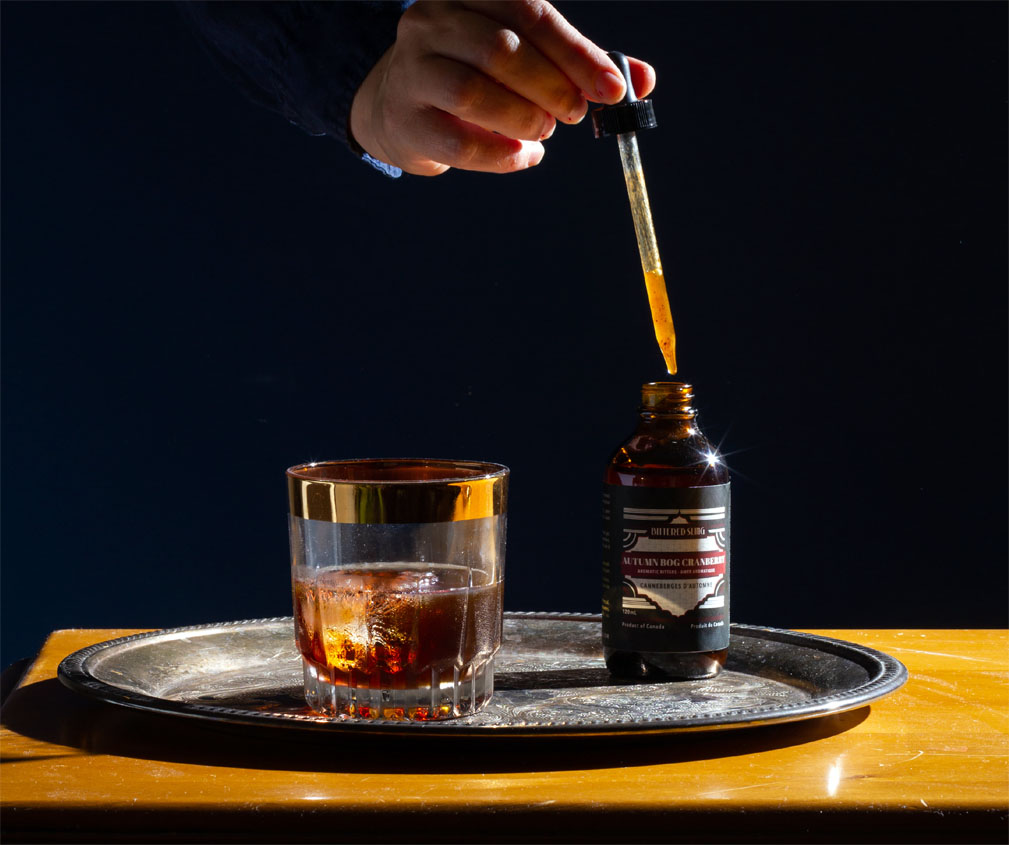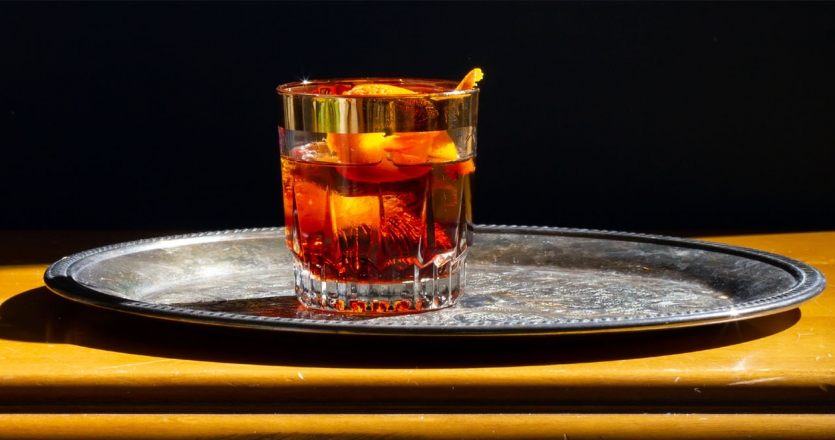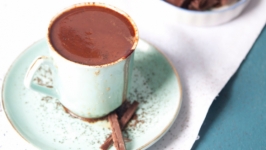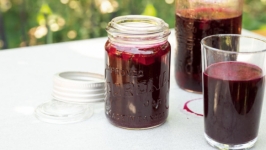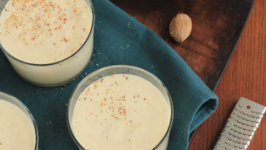Going Down the Bitters Road
If you climbed on board the Aperol Spritz train last summer, have sipped slowly on a Manhattan, or held your breath and gamely downed a Jäger bomb, you’ve been embracing bitterness for longer than you know.
But it’s strange to talk about. Because bitterness is a bad thing. Bitter drinkers, even worse. But drinks that are bitter, they’re good, right? Where emotional bitterness goes hand in hand with a certain stewing over things, bitter drinks invite slow sipping, savouring, and contemplation. Isn’t that better?
When it comes to cocktails, there are lots of ways to get your fill of bitterness. The simplest is to use cocktail or aromatic bitters: tinctures made by flavouring alcohol with botanicals such as roots and bark, and herbal, citrus, or other flavours. They are often referred to as the “salt and pepper” or “spice rack” of the bartender.
Imagine cocktail bitters as a peacemaking rock-band manager bringing together individuals who, brilliant in their own right, don’t always get along perfectly. A dash or two of cocktail bitters will help to bring together disparate elements, smooth out any rough edges, and make the individual cocktail components glitter and sing.
Among cocktail bitters, the most well known is Angostura. I’m guilty of not digging it out enough and have been known to let it linger in the back of the liquor cabinet. I recently dusted it off to try it in a Pink Gin. You can try it too—it’s just gin with a few drops of Angostura.
Cocktail bitters have taken off in the last few years with flavours from orange to chocolate, cranberry to celery, and everything in between. It can be daunting to know where to begin but the fun can be in the trial and error. Vancouver’s The Apothecary and Bittered Sling and Victoria’s Twisted & Bitter are a few local options to experiment with, and most provide recipes. I found a great way that allows me to understand the flavour profile of bitters: I tasted a few drops in soda water. From there, take a drink you already know, perhaps a Whisky Sour, and try switching up the bitters to take it to a new place. After that, the possibilities are endless.
It’s said that bitters ease mild stomach ailments, which are the earliest origins of Angostura—it was developed as a medicinal tincture by a doctor in Venezuela who served Simón Bolívar’s army. Whether or not this is true, there is evidence that bitter compounds open our appetite. They increase production of saliva and stimulate our gastric juices aiding in digestion. Enter the apéritif and another perfect opportunity to experience bitter flavours. Think of the way your mouth puckers when you sip a Negroni. It’s really a signal to your brain saying, “Heads up—we’ve got food coming.”
A classic apéritif is vermouth, a fortified wine, made slightly bitter with the addition of herbs and botanicals. Its name is derived from Wermut, the German word for wormwood, a woody shrub with a bitter aromatic flavour that is a traditional ingredient in Vermouth. What most of us know about vermouth is that you need the dry (and white-coloured) one for a Martini, while the red (and sweet-tasting) one is what your mum used to drink in the 70s. But there are stops at every point along the road from dry to sweet and so much more to experience and enjoy, from sipping it solo to combining it in an Americano or Martinez.
Vermouth is experiencing a renaissance driven by brands from Italy, Spain, and France—and the tradition of sipping it pre-lunch or dinner. But our BC producers are also adding some options in the form of Odd Society’s Bittersweet Vermouth, which contains Arbutus bark, or Marrow Vermouth (who make a sweet and a dry version) from Penticton
Not only used as appetite stimulators, bitter drinks are classically consumed as digestifs. Taken after a belt-loosening meal, they are thought to stimulate and ease digestion. Amaro, which literally means bitter, is an example originating in Italy, and a grape spirit infused with herbs and other aromatics such as barks, citrus peel, and spices. And although here in Canada, it’s rarely consumed that way by youthful revellers, Jägermeister with its herbal and bitter backbone is actually intended as a digestif.
Here are three BC roads to bitterness that will leave you with a pleasant taste in your mouth.
Using Cocktail Bitters:
Champagne Cocktail—British Columbia Style
1 cube of sugar
3 dashes Bittered Sling Autumn Bog Cranberry Bitters
6 oz Fitzpatrick Family Vineyards Fitz Brut or another of your favourite BC bubbles
Place the sugar cube in a champagne coupe and soak with bitters. Top off with bubbles, and enjoy.
As an Aperitif:
Spiked Vermouth
2 oz of your favourite sweet vermouth
½ oz gin
2 dashes orange cocktail bitters such as Victoria Spirits Bitter & Twisted Orange
soda to taste
an orange peel, for garnish
Fill a Collins glass with ice, and add vermouth, gin, and bitters. If you wish, you can top off with soda to taste. My taste is for very little. Stir.
As a Digestif:
Embrace Amaro. Sip slowly over ice. Here are some local options to try:
Mia Amata Amaro from Odd Society Spirits is bitter with flavours of dark chocolate, orange, plum, nut, and mint.
Naramaro from Legend Distilling. Look for orange zest upfront, mild bitterness, and earthy vanilla undertones.
Pacific Northwest Amaro from The Woods Spirit Co. incorporates classic flavours of rhubarb, gentian root, and wormwood, with BC ingredients of Grand Fir needles and blackberry honey.


